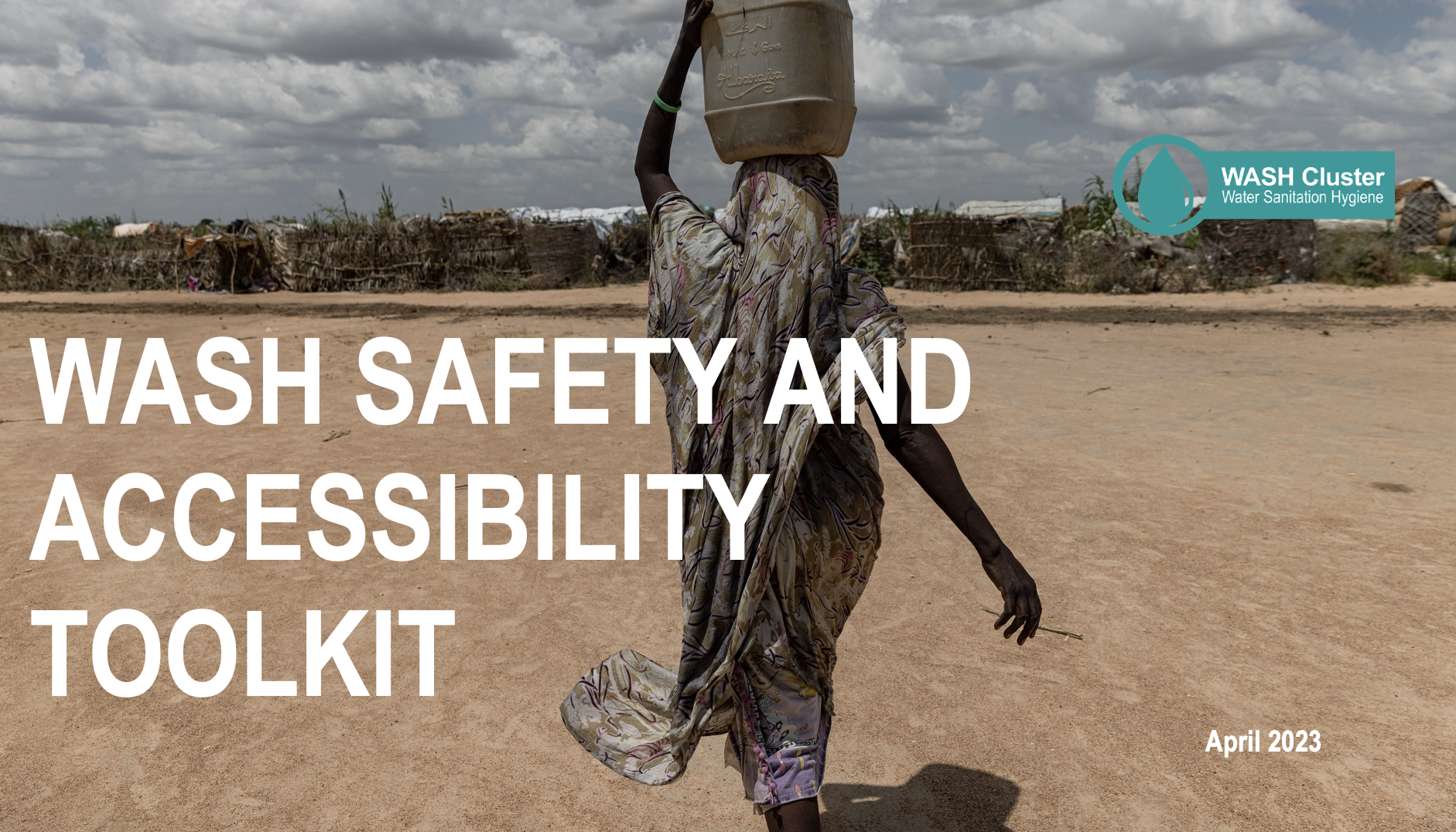WASH Safety and Accessibility Toolkit
This safety and accessibility rapid audit tool is based on visual observation as a means to collect basic information and assess gender-based violence (GBV) risks and accessibility related issues on the route to, while entering and using WASH facilities. It is a structured method for collecting data and information that will support the WASH sector in 1) Assessing GBV risks related to the design, layout, placement of WASH facilities; and 2) Checking if WASH infrastructures are accessible to persons with disabilities in line with the WASH commitments to ensure at least 15% of WASH facilities are accessible.
The results of observations can then be compared against standards outlined in the following key resources to prevent and mitigate GBV risks and address barriers that hinder persons with disabilities from accessing WASH programmes and services.
How to support partners to implement the Safety and Accessibility Toolkit - tipsheet for coordinators and IMs
As WASH actors, we can influence on how we mitigate GBV risks in our response. We can do this by keeping in mind potential risks when we design and implement our programmes and by making sure we understand any barriers to accessing WASH services and facilities that women and girls, including women and girls with disabilities, are facing.
This toolkit is designed to provide practical monitoring mechanisms to track the quality and safety of WASH facilities. The toolkit is intended for WASH cluster partners to be implemented on a regular basis, while aggregated information can be very useful for monthly reporting and follow-up of the response for WASH national coordination teams (NCPs). This information will also be useful for the determination of the needs and the HNO/HRP development, to complement secondary data reviews and inter-agency assessments.
The toolkit has two different types of monitoring approaches i) visual observation checklists and ii) Focus Group Discussions (FGDs) The checklists and suggested FGD questions are available in an excel sheet (hyperlink) and in the word documents in the toolkit. It can either be inserted to a KoBO form or filled in with pen and paper in the original form.
The Safety and Accessibility Audit toolkit is encouraged to be included in partners’ regular monitoring and reporting, to help determine if the response provided is safe, accurate and accessible to all affected population groups. The toolkit and guidance can be contextualized to fit any type of response and is applicable both to acute and protracted emergencies. The checklist or suggested FGDs/KIIs can be included in regular PDMs, DTM, in field visits and spot checks or third-party monitoring, or any other monitoring tools in the IM framework as relevant in the context. This toolkit is also one of the main data collection tools recommended for the People Centered Programming (PCP) module of the AQA project.
Read more in this tip sheet here.
